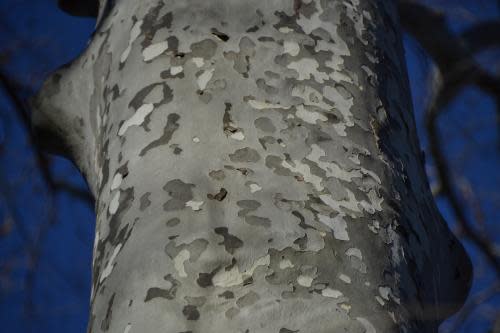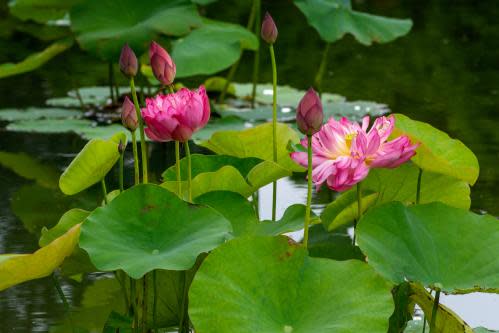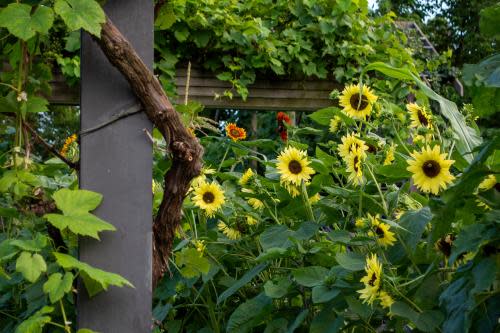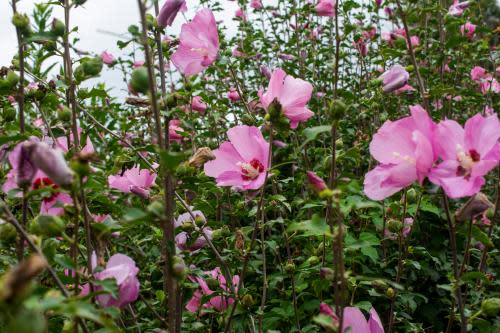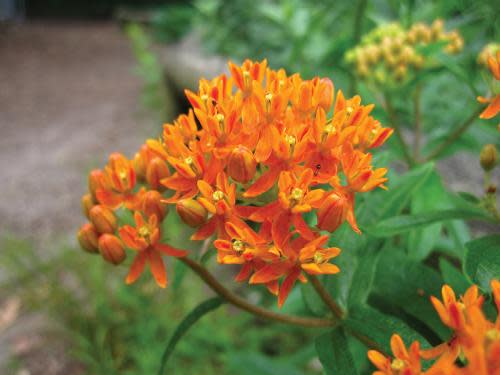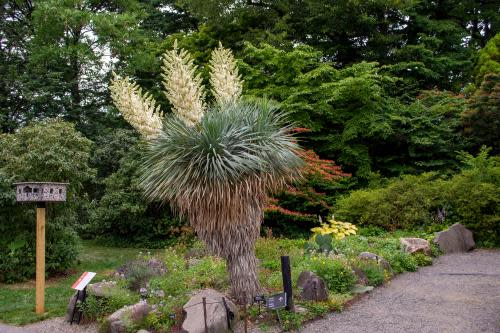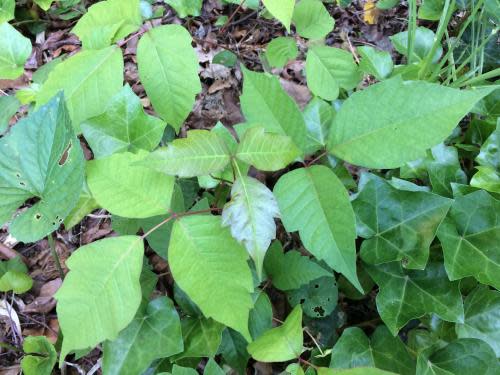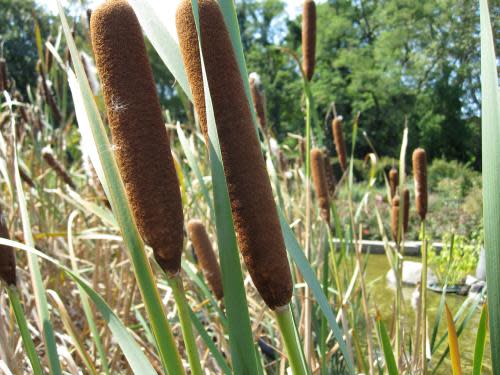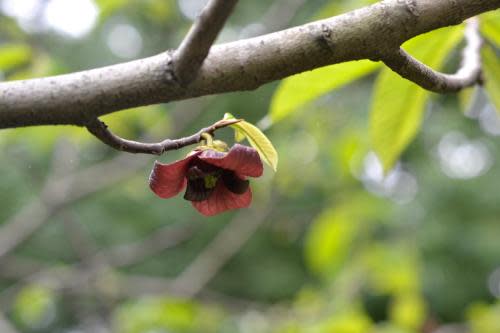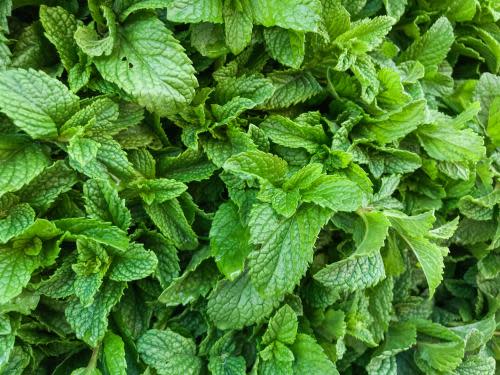Butterfly weed or butterfly bush: can you identify these 10 plants?
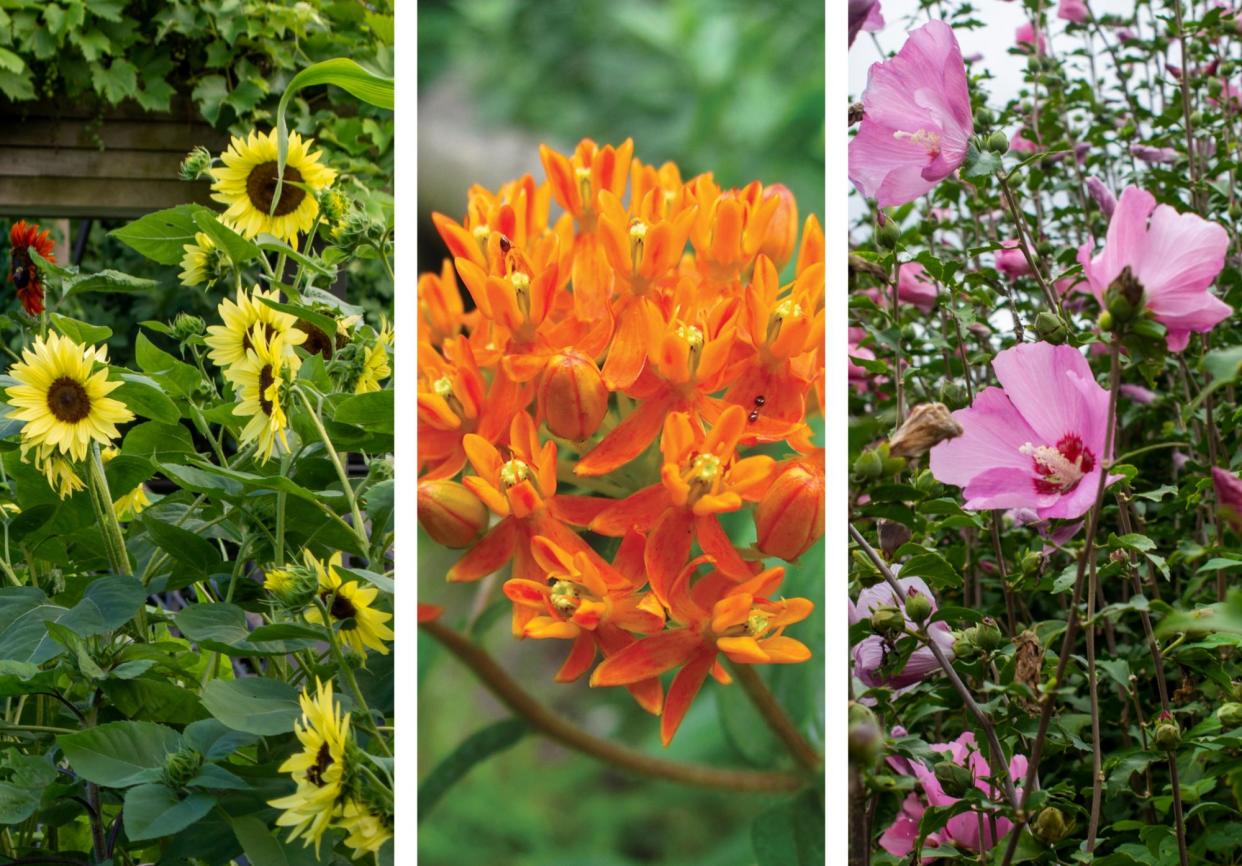
After realizing I couldn’t name most of the plants in my neighborhood, I downloaded a plant identification app. It was a great way to connect with my surroundings.
“Plant identification starts when we examine the parts of the plants we can see,” said Barbara Kurland, director of learning and partnerships at Brooklyn Botanic Garden, though some of these will change depending on the time of year. Kurland recommends paying attention to features like the shapes and arrangement of leaves and buds, bark patterns and the color and flexibility of stems.
Some plant elements are more telling than others. “Flowers and fruits are so diverse that when they are present, they usually help us narrow our identification down to a few or even a single plant,” Kurland said – just think of a sunflower’s large, vivid petals or the shiny, distinctive appearance of an apple. Other unique characteristics can include “the fragrance of their leaves, or specially ‘modified’ parts like tendrils”, she said.
We asked the staff at Brooklyn Botanic Garden to help readers test their plant knowledge with a quiz. Are you familiar with common US plants? Find out below!
London plane tree bark (Platanus acerifolia ) Is this a London plane tree or a sugar maple?
London plane tree
Sugar maple
Sacred lotus ‘Momo Botan’ (Nelumbo nucifera ‘Momo Botan’ ) Is this a water-lily or a sacred lotus?
Water-lily
Sacred lotus
Sunflower (Helianthus) Is this a sunflower or a coneflower?
Sunflower
Coneflower
Rose-of-Sharon (Hibiscus syriacus) Is this a rose-of-Sharon or a modern rose?
Rose-of-Sharon
Modern rose
Butterfly Weed (Asclepias tuberosa) Is this a butterfly bush or a butterfly weed?
Butterfly bush
Butterfly weed
Beaked Yucca (Yucca rostrata) Is this an agave or a yucca?
Agave
Yucca
Poison ivy (Toxicodendron radicans) Is this a Virginia creeper or a poison ivy?
Virginia creeper
Poison ivy
Cattail (Typha sp.) Is this a cattail or phragmites?
Cattail
Phragmites
Pawpaw (Asimina triloba) Is this a pawpaw or a mango?
Pawpaw
Mango
Morocco, Marrakech, mint leaves. (Photo by: Giovanni Mereghetti/UCG/Universal Images Group via Getty Images) Is this lemon balm or mint?
Lemon balm
Mint
Solutions
1:A - The London plane tree, Platanus x acerifolia, is a hybrid, or cross, of two species that ‘met’ in London, England, and hybridized on their own (the first record of the tree is in 1663). Its leaves – which are the symbol of the New York City parks department – look almost identical to maple leaves, with a simple surface and 3-5 lobes. You can tell these two plants apart by their bark. The London plane tree has a memorable brown-gray outer bark that peels in strips to reveal inner bark in colors of white, gray and green. Bark on maples can vary with the species, and with age. Sugar maples, which are native to the eastern US and Canada, have smooth brown-gray bark when young, which ages to a furrowed pattern of long, thick ridges., 2:B - Sacred lotus (Nelumbo nucifera) and water lilies (Nymphaea sp) belong to different plant families, but they look very similar! Both live in aquatic habitats, and both have an underground stem, called a rhizome, from which the leaves and flowers we see emerge. You can tell these two plants apart by their flowers. Water lily flowers have petals that are pointed outward; sacred lotus petals are rounder. Sacred lotus flowers also have a distinctive yellow cone-shaped structure at their center which encloses the female parts of the flower. , 3:A - Sunflowers and coneflowers are both in the same plant family, the Asteraceae. Flowers in this family have a unique characteristic: what appears to be a single flower is actually a cluster of many small flowers called florets. You can tell these two plants apart by their size! Helianthus annuus, or the sunflower, bears flowers that are 7–12in wide on stems that can reach 9–10ft tall. Echinacea, or coneflower, flowers are 3–4in wide on stems 2–4ft tall. Their floral parts are shaped differently, too: The disc florets of Echinacea are arranged on a cone-shaped structure that rises above the ring of ray florets., 4:A - Rose-of-Sharon (Hibiscus syriacus) is in the Malvaceae or mallow family. Native to China, it blooms in the summer months of July, August and September. It's long been planted in gardens here in the US, though it has escaped cultivation and been reported as invasive in several states. Rose-of-Sharon is not really a rose – roses belong to the Rosaceae, or rose family. You can tell these two plants apart by their prickles (or lack thereof). Rose stems have prickles (botanically, these are different to thorns!), which are pointy outgrowths from a plant’s dermal or skin tissue. Hibiscus species do not have prickles. , 5:B - Butterfly weed is in the Apocynaceae or milkweed family. Native to North America, its bright orange flowers attract all butterflies, but like other Asclepias species, it plays a vital role in the life cycle of the monarch butterfly, whose caterpillars feed exclusively on their leaves. You can tell these two plants apart by their size and flowers. Butterfly weed is a perennial wildflower that can reach up to 2ft tall. Its inflorescence, or flower head, is round and flat and consists of many small star-shaped flowers. Butterfly bush is a woody shrub that grows to heights of 6-12ft. Its flowers are purplish-pink and cluster around panicles that resemble lilac flowers. Butterfly bush is also non-native and can compete with other plants. Butterflies do like it, but if you’re trying to support monarchs, you want the weed, not the bush!, 6:B - Yucca species are often associated with landscapes in the west and south-west, though certain species, like Yucca filamentosa (Adam’s needle), are native to the eastern US. Yuccas are pollinated by small moths from two genera, Parategiticula and Tegeticula, commonly called yucca moths. You can tell these two plants apart by their leaves. Yucca species and agave species are both indigenous to the Americas, and are closely related. Both have sword-shaped leaves, but agave leaves are thick and succulent, with sharp teeth on their edges. Yucca leaves are usually not succulent and have smooth edges. , 7:B - It’s always useful to be able to identify poison ivy. Poison ivy (Toxicodendron radicans) is native to North America. Its toxicity comes from an oily resin, urushiol, in its leaves, stems and roots. You might confuse poison ivy for Virginia creeper (Parthenocissus quinquefolia), another native vine that often grows with poison ivy. (It is poisonous to eat but safer to touch.) You can tell these two plants apart by their tendrils and fruits. Poison ivy has compound leaves – leaves made up of multiple parts – with three leaflets; the stalk of the middle leaflet is typically longer than the other two. Its whitish-yellow berries ripen in late summer. Virginia creeper also has compound leaves, but it produces blue-black fruits and climbs with distinctive twisty tendrils that use adhesive 'discs' to attach to trees or rocks. , 8:A - Cattails (Typha species) and Phragmites species both grow in wetland habitats and are often confused for one another. The cattail is native to North America, and all parts of it are edible. Robin Wall Kimmerer’s Braiding Sweetgrass explores several uses of this versatile plant. Phragmites australis ssp australis was introduced by Europeans in the 19th century and is considered invasive. You can tell these two plants apart by their their flowers. If you look closely, they’re easy to tell apart. Cattails have a brown cylindrical flowering head called a spike that resembles a hot dog. Phragmites species’ flowers appear in feathery plumes called 'panicles'., 9:A - Pawpaw (Asimina triloba) is indigenous to North America. It is a member of the Annonaceae, the custard apple family, so named because of the texture of their ripe fruit. The pawpaw lives farther north than other members of its mostly tropical family. Their dark red flowers smell unpleasant to us but attract fly and beetle pollinators. The fruits of these two trees resemble one another, but they’re otherwise quite different. Pawpaw trees are typically around 20ft tall, and drop their leaves seasonally; it grows in temperate rather than tropical climates. Mango trees, native to tropical regions of South Asia, are between 50 and 100ft tall, evergreen and produce numerous clusters of small flowers. , 10:B - Mint (Mentha species) and lemon balm (Melissa officinalis) are both native to Europe and members of the Lamiaceae, or mint family. These close relatives have a lot in common: they have ‘square’, four-sided stems; leaves arranged opposite one another along the stems; and flowers borne on stalks. They’re also both herbs that often do best in a container (both are vigorous spreaders). The easiest way to tell them apart is to smell them. Lemon balm’s oil includes citronellal, a lemon-scented terpene. Mentha species’ essential oils include menthol, a terpene that gives it the scent and flavor we describe as “minty”.
Scores
8 and above.
Well done! You're a plant identification enthusiast.
6 and above.
Nice try! You're a plant identification enthusiast.
5 and above.
Nice try! You're a plant identification enthusiast.
4 and above.
Nice try!
3 and above.
Nice try!
2 and above.
Nice try!
1 and above.
Nice try!
7 and above.
Well done! You're a plant identification enthusiast.
9 and above.
Well done! You're a plant identification expert.
0 and above.
Nice try!
10 and above.
Well done! You're a plant identification expert.

